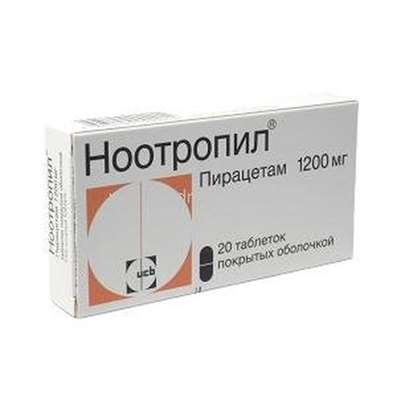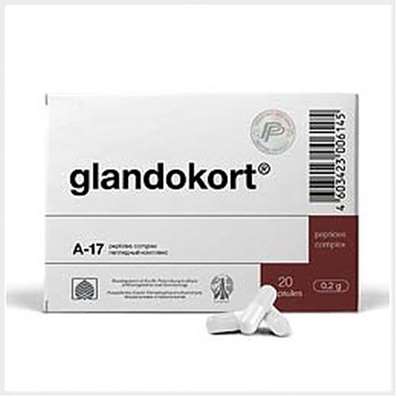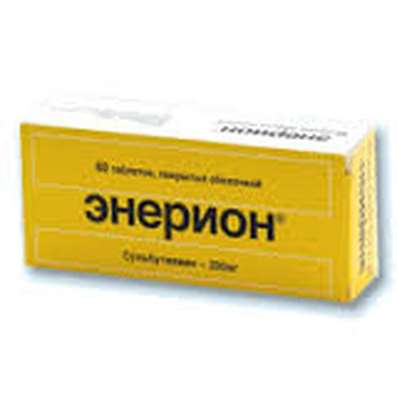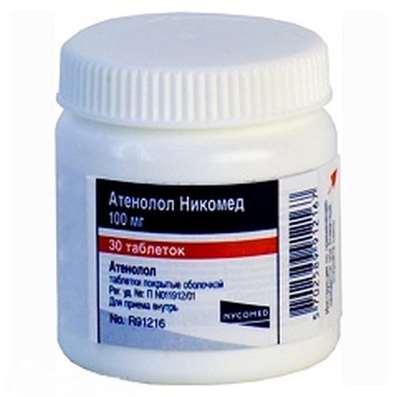Mexidol (Emoxypine Succinate) - Instructions for Use, Dosage, Side Effects, Review
16 Jan 2017
Pharmacological group: Antihypoxants and antioxidants.
Synonyms: Medomexi, Mexidant, Mexicor, Mexipridol, Mexiprim, Mexifin, Metostabil, Neurox, Cerecard.
Active substance: Emoxypine Succinate (Ethylmethylhydroxypyridine Succinate).
Emoxypine (2-ethyl-6-methyl-3-hydroxypyridine), also known as Mexidol or Mexifin when used as the succinate salt, is an antioxidant manufactured in Russia by Pharmasoft Pharmaceuticals. Its chemical structure resembles that of pyridoxine (a type of vitamin B6). It is not approved for any medical use in the United States or Europe.
Mexidol - innovative, original domestic product, which has a powerful anti-ischemic effect.
"Mexidol synthesized at the Institute of Biochemical Physics. NM Emanuel Academy of Sciences (RAS IBCP) in the mid 80s. He studied at the Institute of Pharmacology, Russian Academy of Sciences. For the development and introduction into clinical practice Mexidol group of experts in 2003 awarded the prize of the Russian Government.
Order of Ministry of Health of the Russian Federation Ή432 from December 31, 1996 Mexidol was allowed to clinical application, registration certificate number 96/432 / 3.Blagodarya their mechanisms of action Mexidol has a wide spectrum of pharmacological effects to be implemented, at least on two levels - neuronal and vascular . It has a powerful anti-ischemic, neuroprotective, antihypoxic, nootropic, Wegetotropona, antistress, anxiolytic, anticonvulsant, and other actions.
Mexidol used in the treatment of urgent conditions, such as acute ischemic stroke, traumatic brain injury, acute purulent inflammation of the abdominal cavity (acute pancreatitis, peritonitis).
Mexidol Development History
Among the undoubted achievements of Russian science should include the development and introduction into clinical practice of synthetic and natural antioxidants. Notable among these is the drug "Mexidol", which is a domestic original drug of a new type, like the spectrum of pharmacological effects and mechanism of action.
Priority research work on the study of biologically active free radical molecules were initiated in 60-ies of the last century.
In the early 1980s in the Research Institute of Pharmacology RAMS was synthesized Mexidol - succinate 2-ethyl-6-methyl-3-hydroxypyridine, and identified its pharmacological effects, studied the mechanism of action, performed pre-clinical studies on toxicology and pharmacokinetics, defined trade sign "Mexidol", carried out registration of the drug in the USSR Ministry of health, conducted the first clinical trials and the introduction of the drug into medical practice.
The presence in the structure Mexidol succinate is crucial for the manifestation of the pharmacological effects of the drug, as succinate functionally significant for many processes occurring in the organism and, in particular, is a substrate for enhancing energy metabolism in cells.
Mexidol is a drug with a multicomponent spectrum of pharmacological effects and multifactorial mechanism of action. The most important components of the mechanism of action Mexidol are its antioxidant and membrane effect, the ability to modulate the functioning of membrane-bound receptors and enzymes to restore neurotransmitter balance. Action Mexidol directed primarily on the processes of free radical oxidation. On the one hand, it inhibits lipid peroxidation (LPO), and on the other - increases the activity of antioxidant enzymes. Along with this, it has hypolipidemic effect.
Due to its mechanism of action, Mexidol has a wide spectrum of pharmacological effects, implemented at least at two levels - the vascular and neuronal. He has neuroprotective, antihypoxic, anti-ischemic, nootropic, Wegetotropona, antistress, anxiolytic, anticonvulsant, anti-alcoholic, cardioprotective, anti-atherogenic, geroprotective and other activities. Influenced Mexidol an improvement in cerebral circulation and microcirculation.
It should be emphasized that the agent has the most pronounced effect in the treatment of various diseases proceeding with neurodegeneration, and especially of acute and chronic cerebral circulatory disorders, including stroke. Widespread use Mexidol in clinical and ambulatory practice in the treatment of acute stroke and chronic cerebral circulatory disorders has shown that he is one of the most effective drugs used in the treatment of these pathologies.
Mexidol General Information
Cardiovascular, in particular cerebrovascular, disease acquired in the last decades of the epidemic. For many years, they are the leading cause of death in many developed countries, including Russia, and they account for 60% of total mortality.
Of all the individual risk factors for cardiovascular complications the most powerful impact on longevity has hypertension (AH), which is closely associated with different types of brain stroke (hemorrhagic, ischemic).
In Russia, the incidence of stroke and mortality remain among the highest in the world; each year more than 400 000 cases, in which the mortality rate during the first month of the disease is 35%.
Preventing the development and progression of cerebral suck-REMOTE violations, as well as improving the quality of life of patients suffering from them are among the key problems of cardiology, neurology and therapy. In this regard, it is important to search for new directions of the impact on the various links in the pathogenesis of ischemic brain damage, as well as the expansion of the ideas about the mechanisms of action of already known drugs.
In this regard, a great scientific and practical interest is the drug Mexidol (2 - ethyl - 6 - methyl - 3 - hydroxypyridine succinate) with a multicomponent spectrum of pharmacological effects and multifactorial mechanism of action. Mexidol, precisely in conditions of ischemic brain damage, it has anti-inflammatory and antioxidant action, exerting a positive effect on the process of energy production in the cell: reducing the production of free radicals and restoring the activity of antioxidant enzymes. Meksidol activates intracellular synthesis of proteins and nucleic acids, enzymatic processes Krebs cycle promotes glucose utilization, ATP synthesis and intracellular accumulation, reduced synthesis of which in ischemia and hypoxia is the trigger pathological changes in brain cells.
Mexidol Tablets, film-coated
Indications for use:
The consequences of stroke, including after transient ischemic attacks, in phase subcompensation as prevention courses;
Mild traumatic brain injury, the effects of traumatic brain injury
Encephalopathy of various origins (dyscirculatory, dysmetabolic, post-traumatic, mixed);
The syndrome of vegetative dystonia;
Mild cognitive impairment atherosclerotic;
Anxiety disorders in neurotic and neurosis-like states;
Coronary heart disease in the complex therapy;
Relief of withdrawal symptoms of alcoholism with a predominance of neurosis and vegetative-vascular disorders, postabstinentnom disorder;
Status after acute intoxication antipsychotics;
Asthenic conditions, as well as for the prevention of systemic diseases under the influence of extreme factors and loads;
Exposure to extreme (stress) factors.
Mexidol Solution for solution for intravenous and intramuscular injection
Indications for use:
acute cerebrovascular accident;
traumatic brain injury, the effects of traumatic brain injury;
encephalopathy;
vegetative dystonia syndrome;
mild cognitive disorders of atherosclerotic;
anxiety disorders in neurotic and neurosis-like states;
acute myocardial infarction (the first day) in the complex therapy;
Primary open-angle glaucoma of different stages in the complex therapy;
relief of abstinence syndrome in alcoholism with a predominance of neurosis and vegetative-vascular disorders;
acute intoxication antipsychotics;
acute purulent inflammation of the abdominal cavity processes (acute necrotizing pancreatitis, peritonitis) in the complex therapy.
Nosological classification (ICD10)
F10.3 abstinence;
F41.9 Anxiety disorder, unspecified;
F48 Other neurotic disorders;
G90 Disorders of autonomic [autonomous] nervous system;
G93.4 Encephalopathy, unspecified;
I67.2 Cerebral atherosclerosis;
I67.9 Cerebrovascular disease, unspecified;
K65.0 Acute peritonitis;
K85 Acute pancreatitis;
T43.3 Poisoning and antipsychotic neuroleptic drugs.
Pharmacological action
Antioxidant preparation. Has antihypoxia, membranoprotective, nootropic, anticonvulsant and anxiolytic effects, increases the bodys resistance to stress. The drug increases the bodys resistance to the effects of major damaging factors to oxygen dependent pathological conditions (shock, hypoxia and ischemia, cerebrovascular accident, alcohol intoxication and antipsychotics/neuroleptics/).
Mexidol improves cerebral metabolism and blood flow to the brain, improves microcirculation and blood rheology, reduces platelet aggregation. Stabilizes the membrane structure of red blood cells (erythrocytes and platelets) during hemolysis. Has hypolipidemic effect, reduces total cholesterol and LDL.
Reduces enzymatic toxemia and endogenous intoxication in acute pancreatitis.
The mechanism of action is due to its Mexidol hypoxic, and membranoprotective antioxidant action. The drug inhibits lipid peroxidation, increases the activity of superoxide dismutase, increases the ratio of lipid-protein, reduces the viscosity of the membrane and increases its fluidity. Mexidol modulates the activity of membrane enzymes (calcium-independent phosphodiesterase, adenylate cyclase, acetylcholinesterase) receptor complexes (benzodiazepine, GABA, acetylcholine) that enhances their ability to bind to ligands, contributes to maintaining the structural and functional organization of biological membranes, transport of neurotransmitters and improve synaptic transmission. Mexidol increases the content of dopamine in the brain. Compensatory activity causes increased aerobic glycolysis and decreased inhibition of oxidative processes in the Krebs cycle under hypoxic conditions, with increasing content of ATP and creatine phosphate and the activation energy synthesizing mitochondrial function, stabilization of cell membranes.
Mexidol normalises metabolic processes in the ischemic myocardium reduces the zone of necrosis, and restores the electrical activity and improves myocardial contractility and coronary blood flow increases in the zone of ischemia, reperfusion syndrome reduces effects in acute coronary insufficiency. Enhances anti-anginal activity of nitro-drugs. Mexidol promotes preservation of retinal ganglion cells and optic nerve fibers in progressive neuropathy, which is caused by chronic ischemia and hypoxia. Improves the functional activity of the retina and optic nerve, increasing visual acuity.
Pharmacokinetics
Absorption
When administered in doses Mexidol 400500 mg C max in plasma is 3.54.0 mg/ml and is reached within 0.450.5 h
Distribution
After the/m of the drug is determined in plasma for 4 hours average retention time of the drug in the body is 0.71.3 hours
Breeding
Excreted in the urine mainly in the form of glucuronic conjugated in small quantities - unchanged.
Mexidol Dosage
Mexidol introduced IV or IM (bolus or infusion). For solution for infusion should be diluted in 0.9% solution of sodium chloride.
Mexidol jet injected slowly over 57 minutes, drip - at a speed of 4060 drops/min. The maximum daily dose should not exceed 1200 mg.
In acute cerebral circulatory disorders Mexidol used in the first 1014 days IV drip 200500 mg 24 times/day, then - IM 200250 mg 23 times/day for 2 weeks.
With traumatic brain injury, and the consequences of traumatic brain injury Mexidol used for 1015 days IV drip 200500 mg 24 times/day.
When vascular encephalopathy in a phase of decompensation Mexidol used in IV bolus or infusion at a dose of 200500 mg 12 times/day for 14 days, then - IM at 100250 mg/day for 2 consecutive weeks.
To conduct foreign exchange prevention vascular encephalopathy Mexidol appoint IM at a dose of 200250 mg 2 times/day for 1014 days.
In mild cognitive impairment in elderly patients and in anxiety disorders Mexidol appoint IM at a dose of 100300 mg/day for 1430 days.
In acute myocardial infarction in the complex therapy Mexidol introduced IV or IM for 14 days, on the background of traditional therapy of myocardial infarction, including nitrates, beta-blockers, ACE inhibitors, thrombolytics, anticoagulant and antiplatelet agents, as well as symptomatic agents indicated.
In the first 5 days, to achieve maximum effect, the drug is desirable to introduce IV, in the next 9 Mexidol day may be administered IM.
IV the drug produced by drip infusion, slowly (to avoid side effects) of 0.9% sodium chloride solution or 5% dextrose (glucose) in the amount of 100150 ml for 3090 minutes. If necessary, may slow bolus formulation of at least 5 min.
Introduction of the preparation (IV or IM) is carried out three times/day at every 8 hours daily therapeutic dose of 9.6 mg/kg body weight/day, a single dose - 3.2 mg/kg body weight. The maximum daily dose should not exceed 800 mg, single - 250 mg.
At various stages of open-angle glaucoma in the complex therapy Mexidol administered IM at 100300 mg/day 13 times/day for 14 days.
When alcohol withdrawal syndrome Mexidol administered at a dose of 200500 mg IV drip or IM 23 times/day for 57 days.
Acute intoxication antipsychotics Mexidol introduced IV at a dose of 200500 mg/day for 714 days.
In acute purulent inflammation of the abdominal cavity (acute necrotizing pancreatitis, peritonitis) Mexidol appointed in the first night in the preoperative and postoperative period. Dose depends on the type and severity of the disease, the distribution process, the clinical course options. Removal of the drug should be made gradually, only after sustained positive clinical and laboratory effects.
In acute edematous (interstitial) pancreatitis Mexidol appoint 200500 mg 3 times/day/drip (isotonic sodium chloride) and IM.
When necrotizing pancreatitis mild Mexidol appoint 100200 mg 3 times/day IV drip (isotonic sodium chloride) and IM.
When necrotizing pancreatitis of moderate severity - 200 mg 3 times/day IV drip (in isotonic sodium chloride solution).
When necrotizing pancreatitis severe course - a dose of 800 mg on the first day, with a twofold mode of administration, then - 200500 mg 2 times/day with a gradual decrease in the daily dose.
When extremely severe necrotizing pancreatitis starting dose is 800 mg/day to cupping manifestations pancreatogenic shock when stabilization - 300500 mg 2 times/day IV drip (0.9% sodium chloride) with a gradual decrease in the daily dose.
Mexidol Drug Interactions
In a joint application Mexidol enhances the action of benzodiazepine derivatives anxiolytics, antiparkinsonian (levodopa) and anticonvulsants (carbamazepine) funds.
Mexidol reduces the toxic effects of ethanol.
Mexidol Side effects
From the digestive system: nausea, dry mouth.
Other: allergic reactions, drowsiness.
Mexidol - reviews of doctors.
Mexidol- one of the most successful domestic products. He proved to be excellent in treatment of stroke, it is administered intravenously at the same time in high enough doses . Mexidol application processes in chronic disorders of blood circulation in the brain also proves its efficiency: decrease dizziness, improves memory and speech disorders. Proven effect mexidol when abstinence situations: it removes cravings with dependencies, and even while reducing anxiety, improving the quality of life of these patients. They love him to appoint and opticians. I have no personal experience in applying it in pediatrics, but in "attending physician", which I love very much, publishes information about its effectiveness in the treatment of lesions of the nervous system in children during the first months of life, as well as in treatment of infertility. Safety, minimal side effects and high efficiency make it possible to prescribe it in other situations, but only on doctor's advice, and he is released from the network of pharmacies by prescription only.
Mexidol improve psycho-emotional state, memory, motor activity, regulate cerebral hemodynamics, reduces the level of cholesterol has a positive effect on the rheological properties of blood, which improves the quality of life and physical adaptation helps stroke patients. neurorehabilitation The problem is a very important and complex. With regenerative treatment of these patients used a variety of drugs.
Ischemic stroke develops most often in people of older age groups, usually with complex somatic diseases, so treatment approach must be complex.

 Cart
Cart





